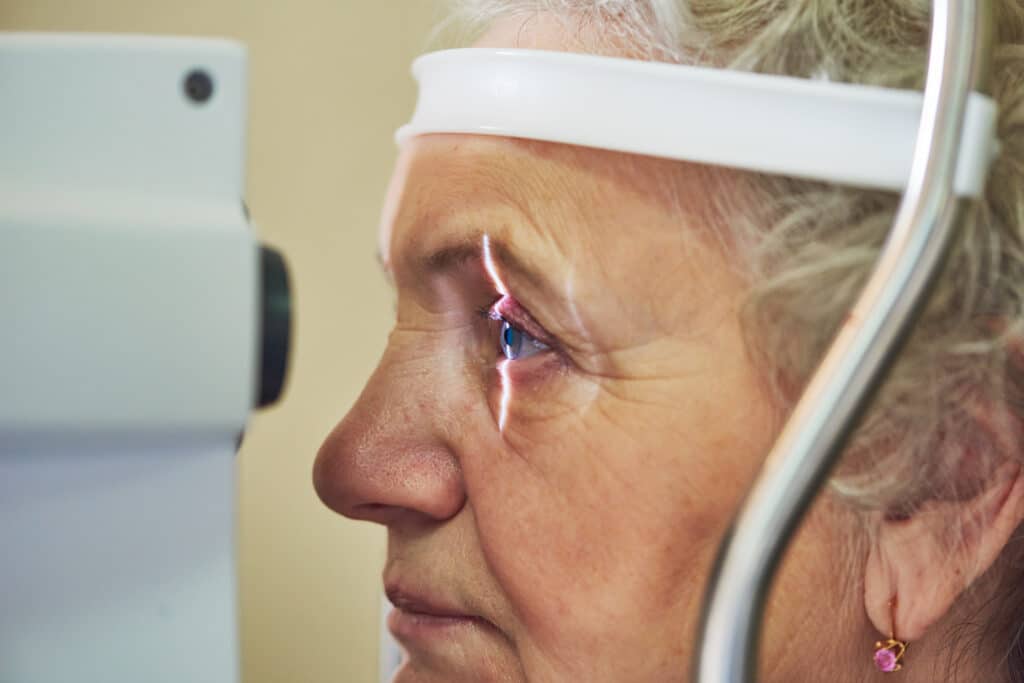Implantable Contact Lens (ICL) Surgery: What to Know
May 29, 2020
With so many options and variables surrounding vision correction, it can be difficult to determine what is truly the best option for you. While LASIK is the household name for improving vision through surgery, it may or may not be a good fit for you and your eyes.
One procedure that has continued to gain in popularity over the years is ICL surgery, which essentially delivers a lens implant as a no-maintenance and permanent solution to improving your vision.
ICL Surgery Overview
With ICL surgery, a Visian ICL (also known as an Implantable Collamer® Lens) is inserted just behind the iris, between the eye’s natural lens and colored iris. The intent of this procedure is to modify the eye’s focusing power and reduce the need for eyeglasses or contact lenses. An ICL procedure is commonly utilized to treat moderate to severe myopia (nearsightedness) and/or astigmatism.
ICLs complement the eye’s existing lens to bend (refract) light on the retina, resulting in improved vision correction. The ICL is composed of plastic and purified collagen (which also naturally occurs in your body). This implant is biocompatible, soft, and flexible, and provides ultraviolet light protection as well. You may occasionally hear ICLs referred to as an “implantable contact lens” or “permanent contact lenses” as it has a similar function to that of a traditional contact lens.
An ICL is considered to be a Phakic lens, which essentially references that the eye’s natural lens remains intact alongside the implant. This is different from an intraocular lens (IOL) that replaces an eye’s natural, deficient lens that may have been removed in a cataract surgery, for example.

Who Is a Good Candidate for ICL Surgery?
An ICL is an excellent option for people who are too nearsighted for LASIK or PRK (photorefractive keratectomy). If your cornea is too thin or irregularly shaped to conduct a laser eye surgery, ICL may be a viable alternative for you as well. There are a few key characteristics that make a good candidate for ICL surgery:
- You are between 21 and 45 years old.
- You have nearsighted vision with mild to severe myopia (-3D to -20D).
- You have not had a change in prescription of more than 0.5D in the past year.
- You are looking for a procedure that doesn’t create dry eye syndrome.
- You should have enough endothelial cell density and adequate anterior chamber depth for safe implementation of the procedure.
It is important to discuss your best treatment options with an experienced ophthalmologist prior to proceeding with any eye surgery. Taking into account your vision deficiencies, astigmatism, other conditions of your eye and lifestyle requirements, you should be able to determine the best viable options for vision correction together.
What to Expect During and After ICL Surgery
In the weeks leading up to your ICL surgery, a laser peripheral iridotomy will be performed. During this pre-op procedure, two micro-holes are made in the periphery of the iris to ensure that there is proper fluid flow after the ICL is implanted. This is a painless process, as your doctor will apply numbing drops prior to the procedure.
When you arrive for your official ICL procedure, eye drops will be administered to dilate your pupils and anesthetize your eyes. At no point in the ICL procedure is corneal tissue removed. Your doctor will fold and insert the ICL through a small 3mm incision at the base of your cornea. Once inserted behind the iris, the doctor will make adjustments to the ICL to ensure proper positioning within the eye for an optimal vision correction. Because this incision is so small, in most cases it is self-sealing and no stitches are required after the operation.
When the procedure has concluded, many will have improved vision nearly immediately. You will be given aftercare instructions and prescribed additional eye drops to clean your eyes and prevent infection following the procedure. You will need to have someone drive you home after the appointment as your vision adjusts and to give time for the effects of any provided sedatives to subside.
Your eyes and vision will continue to improve over the next two to three days as they heal from the procedure, and a follow-up exam will assess your eyes and provide an informed recommendation on your ICL recovery time and process. In many cases, the eye will mostly heal and regain relatively normal function within the first 24 hours following surgery.
Is ICL Surgery Safe?
Yes. ICL surgery is a safe and proven procedure that takes thorough safety precautions leading up to your surgery and through follow-up appointments. The first ICL was implanted in 1993 and there have been over 1 million ICLs implanted since then. Because this surgery does not affect the structural integrity of the eye or change its shape, the risks associated with ICL are minimal. Some studies suggest that for patients with low myopia, ICL may be a safer and more effective alternative to LASIK.
Before your scheduled surgery date, you will receive a comprehensive pre-op eye exam to obtain measurements and assess your eye’s unique characteristics to help ensure a successful procedure.
Is ICL Surgery Painful?
No. ICL eye surgery is typically performed in less than 30 minutes and is a relatively pain free outpatient surgical procedure. Prior to surgery, you will likely be given a mild sedative and will also receive a local anesthetic to numb your eye and block any potential pain.
The Path to Clearer Vision Starts Here
Is ICL Surgery Permanent?
The intention with an ICL surgery is for it to be permanent, giving you a long-term vision solution and a replacement for (or less reliance on) traditional contact lenses and eyeglasses. Fortunately, if you are experiencing any adverse side effects from ICL, the procedure can typically be reversed without causing structural damage to the eye. Possible side effects requiring removal or adjustments of the ICL may include:
- Over and under correction
- Glares or halos
- Eye pressure increase (which usually normalizes with time)
- Eye infection or inflammation
Another potential reason to remove an ICL is if your vision changes over time, which in that case it can be swapped out for a different-powered ICL. While the ease of removing the ICL is an added benefit to the procedure and is generally deemed to be safe, there are inherent risks with any surgery.
As the eye naturally ages, cataracts will form. Once a cataract has developed. The ICL will be removed along with the cataract. At this time an IOL (intraocular lens) will be placed in order to correct the vision once again.
How Much Does ICL Surgery Cost?
ICL is generally more expensive than LASIK, and can cost around $4,000 per eye. Because this is an elective procedure, it is unlikely that your insurance company will contribute to this expense. While this is an expensive procedure, it is important to view it as the long-term investment that it is.
At Heart of Texas Eye Institute, we offer multiple low monthly payment plans and 0% financing options to help make your dream of clear vision more attainable.
Conclusion
An Implantable Collamer® Lens is an excellent option for those who are looking to get away from the everyday maintenance required with contact lenses or glasses. ICL may be especially beneficial for those with high-degrees of myopia, thin or irregular corneas, or dry eyes. The fact that this procedure is also reversible and can adapt to any changes in vision is another key benefit of ICL, as well as the quick recovery process.
If you are ready to explore if ICL or other lens implant options may be right for you, the Heart of Texas Eye Institute is here to help you with a free consultation. Our highly experienced ophthalmologists can help you consider the available treatment options to get you on the path to better vision and the improved quality of life that comes with it.


